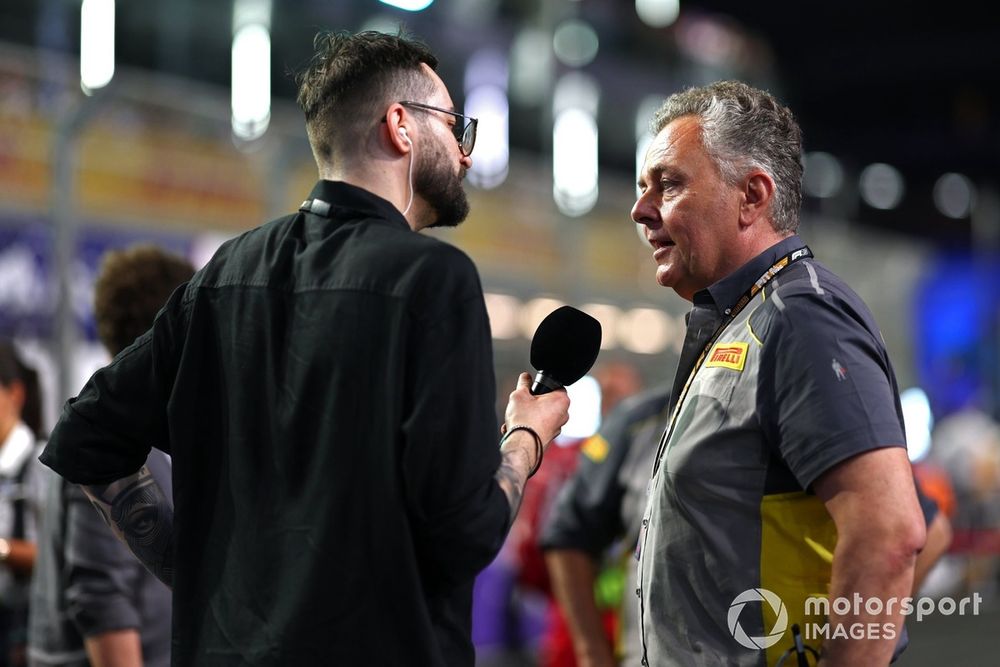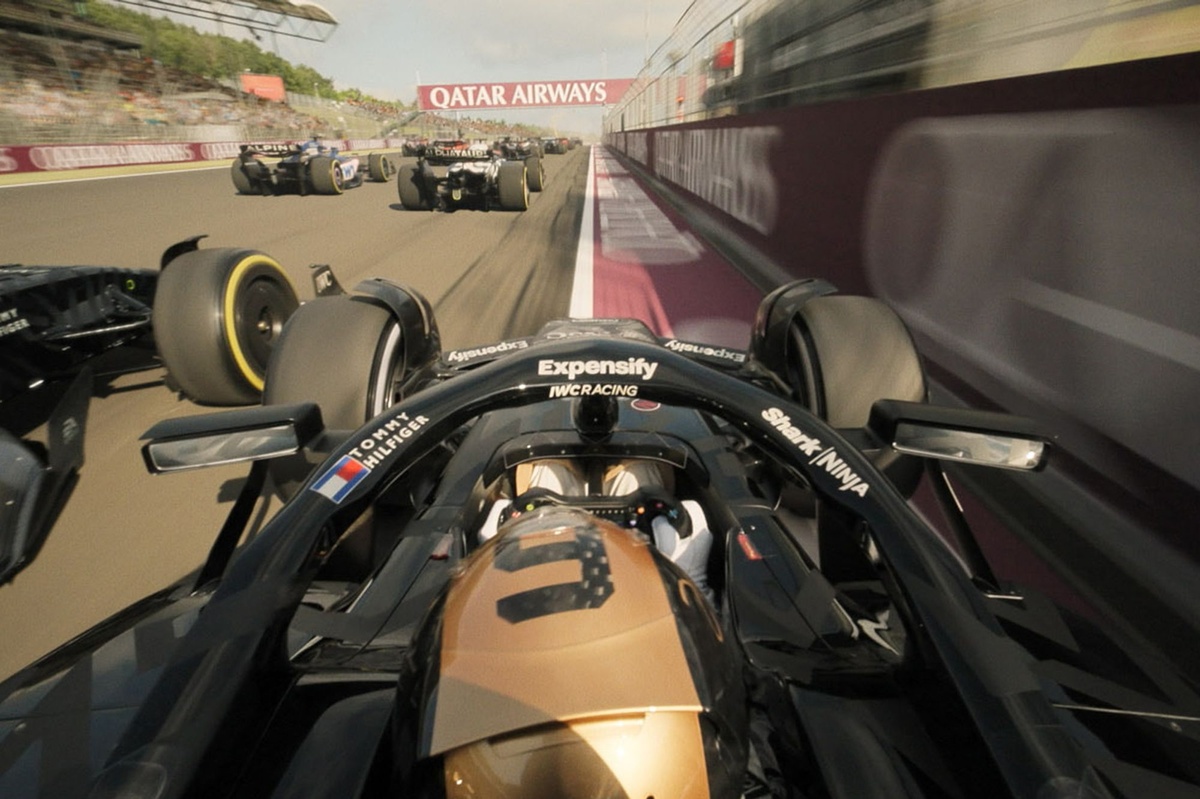In less than a week, the F1 movie will have hit cinemas across the globe, with audiences witnessing the product of several years of planning and detailed execution. With Formula 1 opening its doors to Hollywood, welcoming the production into its hallowed fold, it seemed as though everyone had a part to play.
Mario Isola, Pirelli’s motorsport director, was one of those people. The Italian tyre manufacturer equipped the production with rubber worthy of such a movie, enabling filming to take place at lower track speeds than usual.
“I remember I met them for the first time in Bahrain two years ago at the pre-season test,” Isola revealed to Motorsport.com and other media. “They came to me with this secret project, saying, ‘We need tyres.’
“But obviously, they were not planning to use Formula 1 cars, so they needed, let’s say, different tyres – more similar to Formula 2.”
The filmmakers faced an issue with tyre temperatures on the Mercedes-developed Formula 2 machinery they were using. With filming taking place at much lower speeds than usual, they struggled to generate heat in their tyres, resulting in significantly limited grip levels.
“Another question mark was about filming at low speed. We all know that to generate grip in Formula 1 tyres, you need to go faster, to put energy into the tyre. So the first idea was to produce tyres with different labels on the sidewall – white, yellow, and red – but all with a very soft compound in order to generate grip.

Lewis Hamilton at the World Premiere of F1 The Movie
Photo by: Getty Images
“We started like this, then we realised that also with the normal tyres, more, let’s say closer to Formula 2 tyres, it was okay. We supplied many different tyres for many different scenes, and it was a good cooperation because they wanted it to be as much as possible real.”
Director Joseph Kosinski implemented the latest in camera technology to capture the raw and immersive feeling of racing through relationships with both Apple and Sony. And if the reviews are to be believed, he succeeded in this task. But the tyre manufacturing was also a critical piece of the puzzle to ensure the film remained authentic, while also flirting with the boundaries of a Hollywood production.
“It was clear when we went to Monaco to watch the movie for the first time. They said, ‘It is a Hollywood movie. Don’t forget that – it’s not a documentary,'” Isola continued. “But I personally like it quite a lot. It’s real, and there is a nice story behind that. I believe it’s a good way to attract even more people.”
After the substantial success of Netflix’s Drive to Survive, F1 and its stakeholders are looking forward to seeing another surge in popularity as the movie is absorbed by the public.

Mario Isola, Director of Pirelli
Photo by: Sam Bloxham / Motorsport Images
“We know how important was Netflix with Drive to Survive, especially in the United States. It changed completely the perception of the American people toward Formula 1. Formula 1 always tried to penetrate more in the United States, and it was not possible. Now people have a lot more contact with drivers through social media, through the new tools that are available.
“Backstage is very important. We saw on our Instagram profile that sometimes we do… not stupid things – but very basic things – like measuring the grip with a machine. You put a small video on Instagram, and in a few days, you have 1 million viewers. And how is that possible?
“Because people want to know what happens in the backstage. And Netflix gave them the possibility to know drivers better, and what happens – and other people not only drivers.
“It’s impressive that when we travel for races, people recognise me and other people that are far from being drivers or famous or whatever. And that’s nice for the success of Formula 1. And the movie, I’m sure, will create another boost in this direction.”
In this article
Alex Harrington
Formula 1
Mario Isola
Be the first to know and subscribe for real-time news email updates on these topics
Subscribe to news alerts
